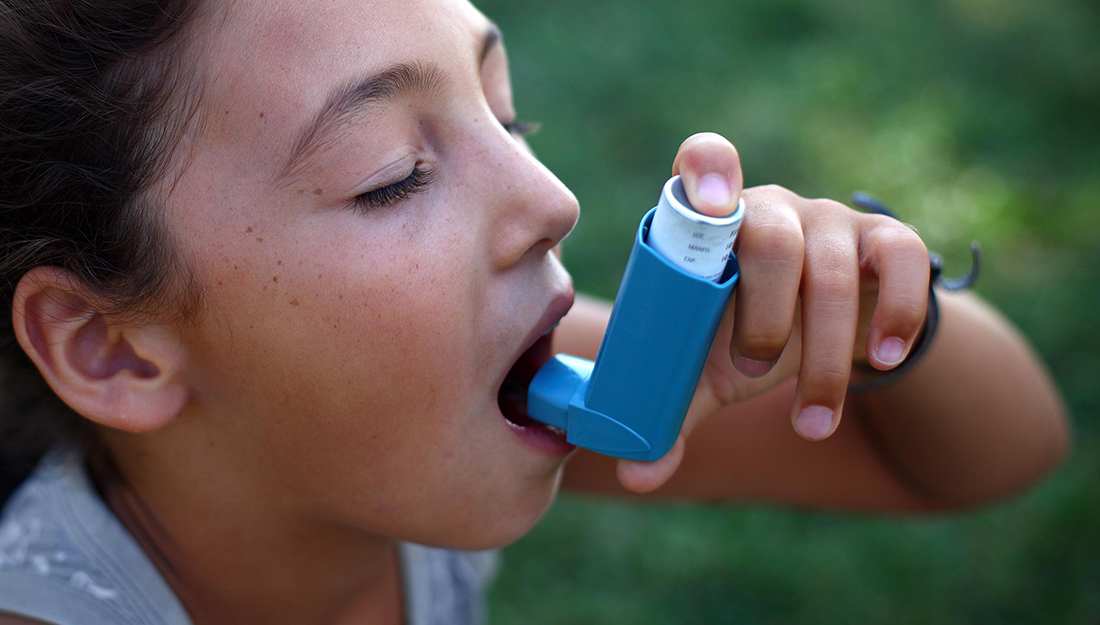- Dominic Hernandez
- Community, Medicine, Show on VR homepage, Trending
Making the most of your inhaler
What you should know, and ask, to use your inhaler properly

An inhaler seems pretty self-explanatory, and many people have memories of classmates who have had to use an inhaler at some point during the school day. However, inhalers can go beyond asthma in the schoolyard, and many different conditions—such as chronic obstructive pulmonary disease (COPD) and cystic fibrosis—can require the use of these little devices.
Although an inhaler may seem like a simple push-and-breathe-type mechanism, Selina Lopez, health educator and respiratory therapist from the Texas A&M Coastal Bend Health Education Center, has tips to make sure you’re getting the most of your medication.
Are there different types of inhalers?
Whether it’s a rescue inhaler to be used in emergencies, or one used daily as a maintenance treatment, it’s important that you know when to use your inhaler. Maintenance inhalers are to be taken every day and help improve lung function and give you better long-term control of your symptoms. Rescue inhalers offer quick-relief from sudden breathing problems and are not meant for long-term control.
“Talk to your health care provider about any questions you may have about your inhaler,” Lopez said. “Be aware of how often you use your rescue inhaler and if you’re using your maintenance inhaler, because if you end up needing your rescue inhaler too often, you may need a change in medication.”
In regards to asthma, one way to know if you’re using your rescue inhaler too often is to follow the “Rule of Two.” Do you:
- Use your quick-relief inhaler more than twice per week
- Awaken at night with asthma symptoms more than twice per month
- Refill your quick-relief inhaler twice per year
- Measure your peak flow at less than two times 10 (20 percent) with asthma symptoms
If any of these statements apply to you, talk to your health care provider about adjusting your current asthma plan.
Using your inhaler properly
Once you know when to use your inhaler, you’ll need to know the right way to use it, and that requires good communication with the prescriber or a pharmacist. It may come as a surprise to some, but there are many different types of inhalers. Inhalers come in various uses, shapes and sizes—including circular inhalers. This makes the proper use of an inhaler different, depending on which type you’re prescribed.
“It’s important to get a physical demonstration from your health care provider,” Lopez said. “Also, return the demonstration back to your provider so that you’re sure you’re doing it correctly.” It’s also a good idea to check back regularly with your health care provider to make sure you’re still using it appropriately.
The importance of getting your full dose of medication cannot be overstated, and recent studies suggested that patients who use inhalers may only be getting about half of their medication per puff. The authors attribute this medication waste to patients using their inhaler incorrectly—typically from mistiming their inhale.
Also, be sure to rinse your mouth after using an inhaler since medication can linger. “If your medication sticks to the back of your mouth, it can create an oral thrush,” Lopez said. “This makes you more susceptible to developing a type of yeast infection.”
One way to combat the build-up of medication in your throat or mouth, and to ensure that you’re getting a full dose with every puff, is to use a spacer with your inhaler.
What’s a spacer?
If you’re using a puffer type of inhaler, ask your health care provider about using a spacer, or an aerosol-holding chamber. These are long tubes that slow the delivery of medication from pressurized metered dose inhalers (MDIs). While these clunky devices, which are often bigger than the inhaler itself, may seem like a nuisance, they are extremely beneficial for medication distribution.
“Spacers make sure that the medication gets down deeper into the lungs instead of lost in your mouth or tongue,” Lopez said. “If you aren’t getting the full dose of the medication, you won’t see improvement and will likely be on medications longer.”
Be sure to clean your spacer daily, or as advised by your health care provider. To clean your spacer, rinse it with warm water and then air dry. Don’t dry the spacer with a towel, as that can cause static.
When it comes to proper use of your inhaler, Lopez recommends constant communication with your provider. “All inhalers are not the same, so it’s important to talk to your health care provider and follow the directions,” Lopez said. “Incorrect use can cause flare-ups and hospitalizations.”
Media contact: media@tamu.edu


